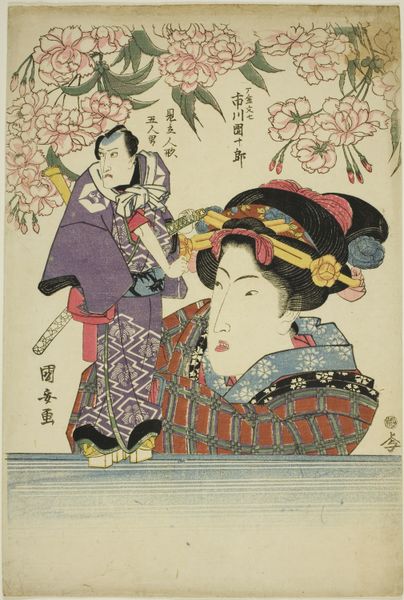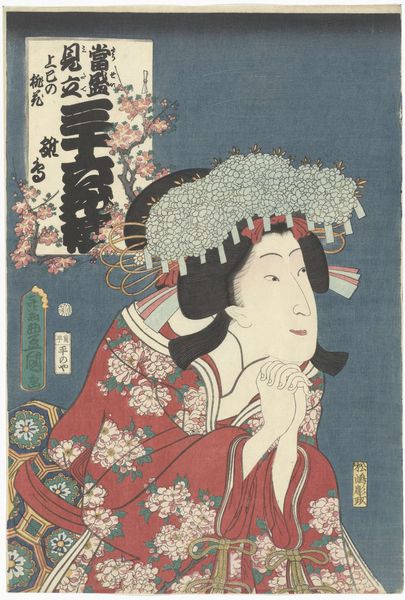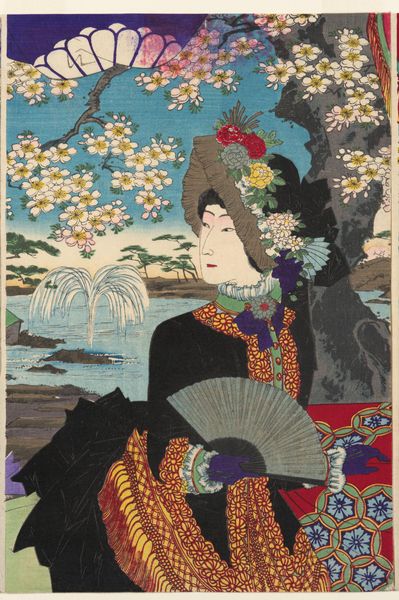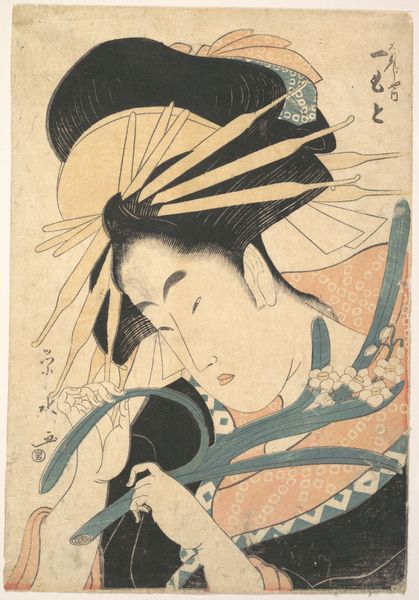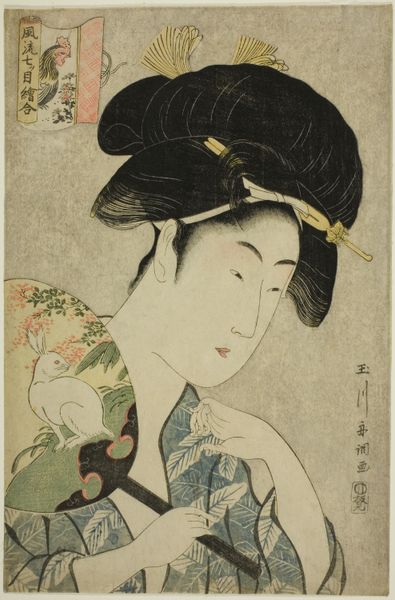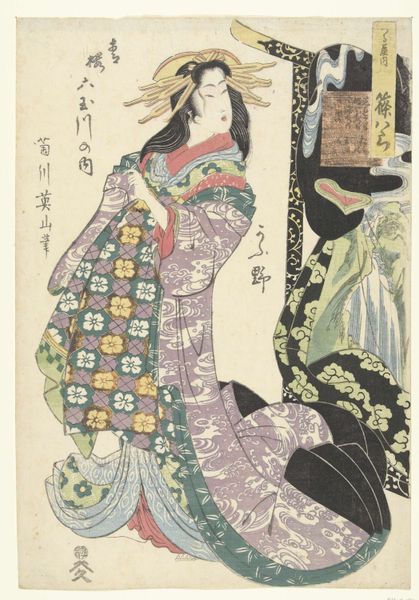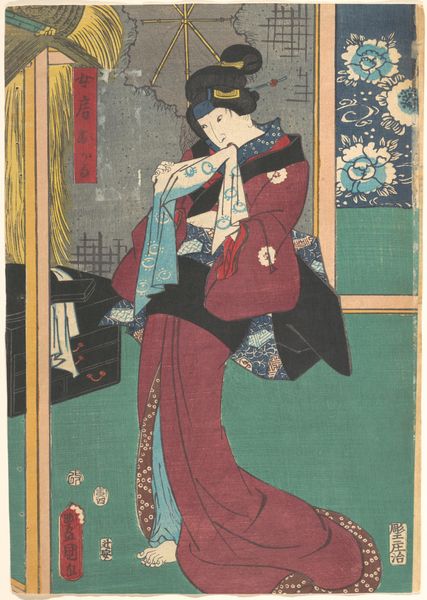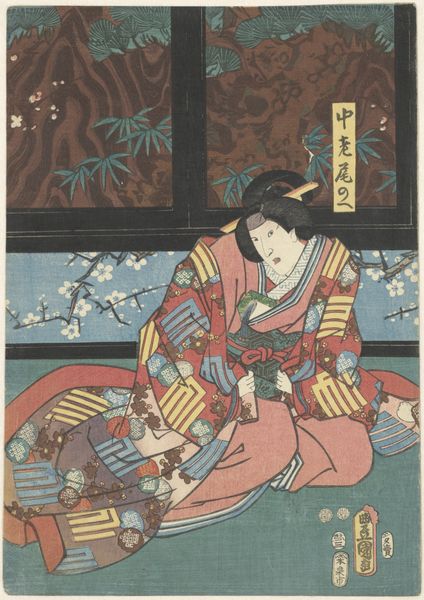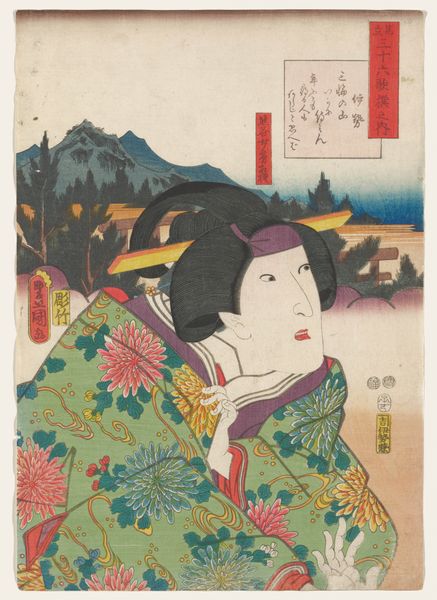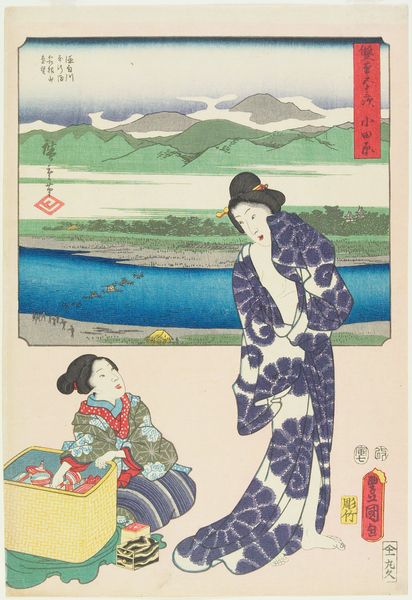
Woman holding puppet of actor Onoe Kikugoro III as Gokuin Sen'emon c. 1820s
0:00
0:00
print, woodblock-print
#
portrait
# print
#
asian-art
#
landscape
#
ukiyo-e
#
figuration
#
woodblock-print
#
decorative-art
#
decorative art
Copyright: Public Domain
Curator: Let's discuss this remarkable ukiyo-e woodblock print by Utagawa Kuniyasu, created around the 1820s. It's titled "Woman Holding Puppet of Actor Onoe Kikugoro III as Gokuin Sen'emon." Editor: My first impression is that it has a surreal, almost dreamlike quality. The scale is intriguing, especially the disproportion between the woman’s face and the puppet. The pink hues and delicate flowers contrast sharply with the puppet's serious expression. Curator: The exaggerated size of the woman's face emphasizes her role as a manipulator, a puppeteer in control of the actor's representation. This draws on the traditional symbolic association between women, illusion, and theatrical representation in Japanese culture. Note the delicate blossoms above – perhaps suggesting transience or the fleeting nature of fame. Editor: That relationship between the woman and the puppet raises some fascinating questions. Is Kuniyasu commenting on the limited agency of female figures in a patriarchal society by turning the woman into the stage manager, the one literally holding the strings? The flowers, while pretty, might underscore the ephemerality of a woman’s value as well as a performer's fame in 19th-century Japan. Curator: Precisely. The figure of Onoe Kikugoro III is, after all, fixed in the role of Gokuin Sen'emon. Through this, Kuniyasu is making visual arguments about identity and performance in Japanese society, reflecting an inherent belief that even seemingly permanent icons are constructed, managed. This interplay can remind us that these printed likenesses played a pivotal part in forming collective memory around performers. Editor: Absolutely. It underscores how fame, representation, and even identity are performative and controlled narratives. Even looking at the costuming gives insight to identity— the woman and the puppet almost feel connected through the attention to pattern in the clothing. And of course the puppet, representing the famous Onoe Kikugoro, perpetuates narratives that might legitimize the subjugation of the feminine. Curator: I find myself fascinated by how it encapsulates a whole cultural matrix of theatre, representation, and societal roles through simple woodblock techniques. It remains a powerful emblem of the symbolic weight carried in the ephemeral beauty of ukiyo-e. Editor: For me, this work embodies a moment of cultural tension where the performative aspects of both theater and societal roles were being closely examined—and possibly challenged through the lens of art.
Comments
No comments
Be the first to comment and join the conversation on the ultimate creative platform.
